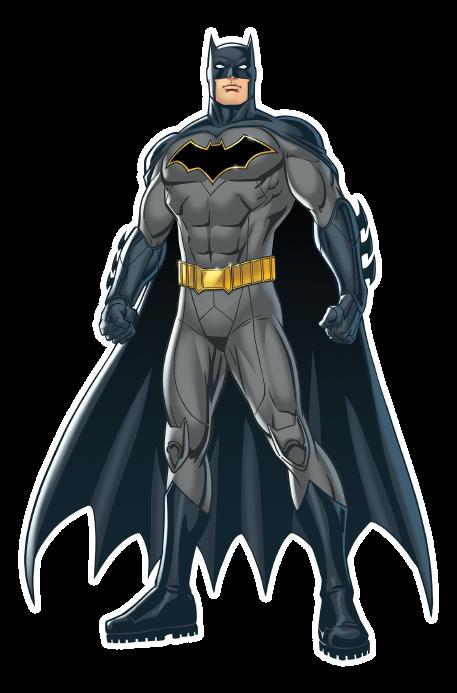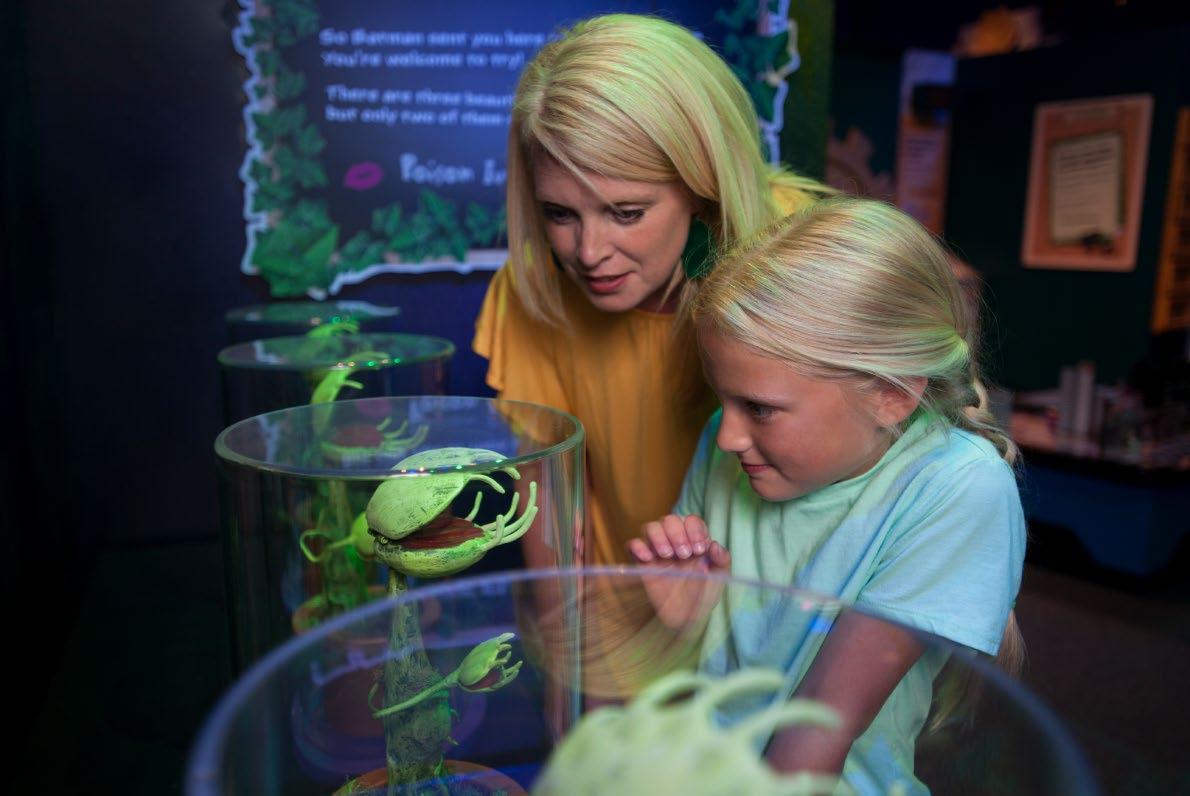












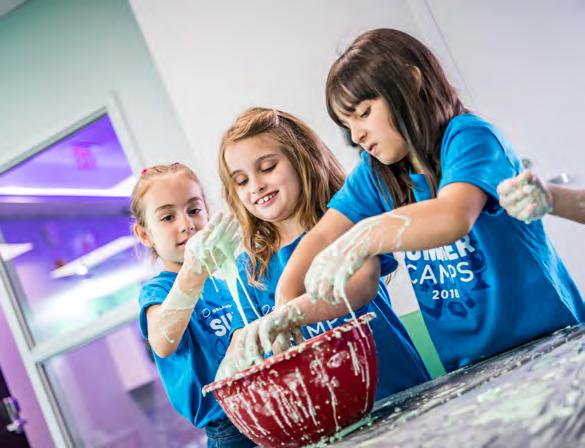
Orlando Science Center Summer Camps inspire students to get excited about STEM as they create, experiment, make new friends, and develop 21st Century Skills.
CAMPS FEATURE:
Our Camps are designed and taught by OSC educators in trending topics including robotics, space, nature, and more!
American Camp Association (ACA) accreditation and staff training ensure a safe, healthy environment.
Member, sibling, and multi-week discounts available! Early and Late Care are available for an additional fee.

STEM starts here! Our trained preschool educators guide 3-5 year-old children as they build critical 21st century skills in a fun and safe environment.
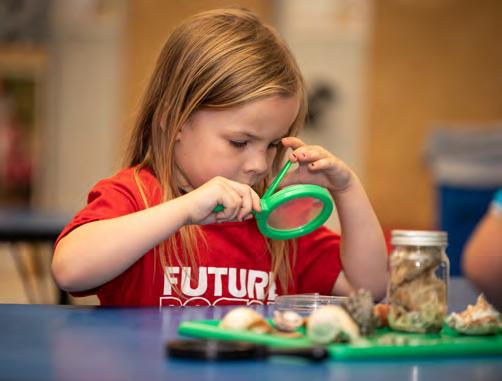
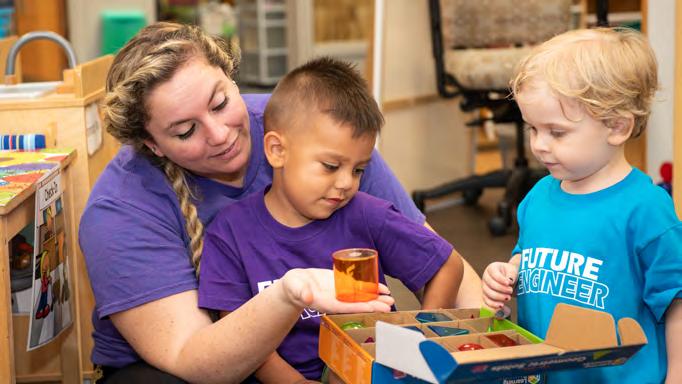


At Orlando Science Center’s NAEYC-accredited Preschool, children benefit from a developmentally appropriate learning space with hands-on STEM activities, skill-building centers, and exhibit experiences. Contact Reservations at 407.514.2112 or visit osc.org/preschool for more information. Due to limited availability, please act now to guarantee a space for your child! Children in our 3-year-old program are guaranteed enrollment in VPK next year. VPK is at capacity for the 2024-2025 school year.

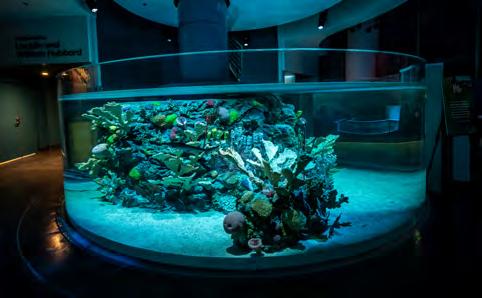
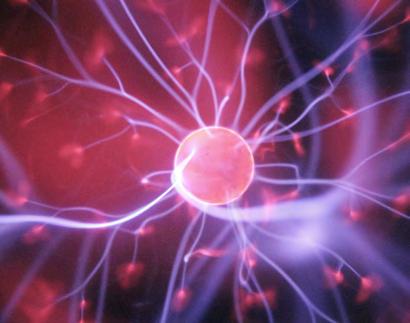
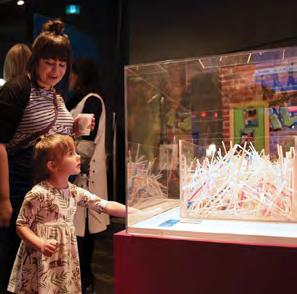

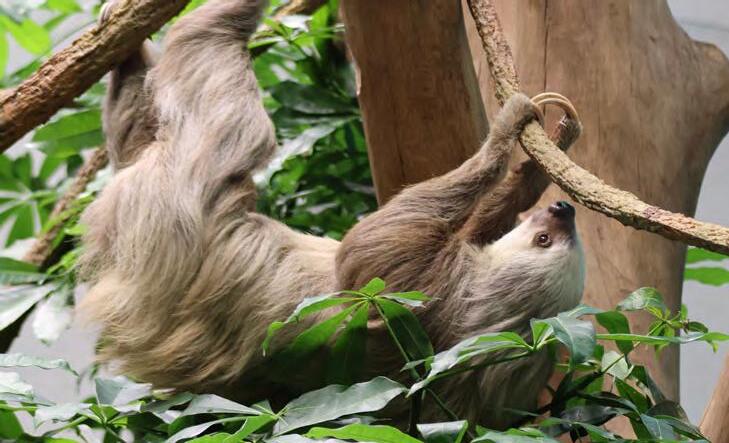
Sydney Baker, Emily Duguid, Esha Gill, Jill Goddard, Lisa Hardt, Heather Mahoney, Melanie McGuffie, JoAnn Newman, Chelsea Piner, Christina Schreiber, M.J. Soileau Ph.D., Jeff Stanford
Sydney Baker, Roberto Gonzalez On the Cover: Izzy the Hoffmann’s two-toed sloth (Choloepus hoffmanni) hangs out in the Rainforest habitat of our new nature and conservation exhibit, Life. Photo by Sydney Baker.

Astronaut Mae Jemison said, “We look at science as something very elite, which only a few people can learn. That’s just not true. You just have to start early and give kids a foundation. Kids live up, or down, to expectations.” What a wonderful description for what we do at Orlando Science Center. Our children are the pioneers of tomorrow and we need to start preparing them today. Our efforts help develop important skills needed to address the challenges of our world, which seem to grow more complex every day.
Orlando Science Center has the power to harness curiosity as a driving force for learning. It has the ability to instill a sense of wonder in all of us. I feel this power every day and it continues to affect me. Over the last few years, I’ve been truly changed by what I’ve experienced here. You see, I now have two amazing grandsons. I treasure my time with them, especially during visits to the Science Center. They are both now three years old and it’s such a joy to be part of their journey.
I’ve always been a true believer in what we do, but being able to see those lightbulb moments happening within my own family energizes me for what lies ahead. I am inspired every time. I want every family, every child, to experience this feeling of inspiration and wonder. I want them to discover and learn and grow together. And the sad, hard truth is not everyone has that chance. Not every child will be able to have these experiences.
Access can make all the difference. Orlando Science Center continues to make access possible, whether that be through our Science for All program, which provides discounted admissions and memberships to families in need, or through what is happening every day in our Neighborhood Science outreach program. We touch lives and inspire innovation, creating access to big ideas. These experiences can have immeasurable impacts that will resonate for generations.
Orlando Science Center has created an environment that encourages imagination, creativity, and learning. Whether that’s with a new exhibit, live show, workshop, or event, we are encouraging dreams in our future leaders, nurturing the skills to achieve them, and preparing them for what comes next. We can never forget that sometimes it only takes a spark, a single glittering moment of inspiration, to set someone on a path to greatness.
Sincerely,
 PRESIDENT/CEO
PRESIDENT/CEO
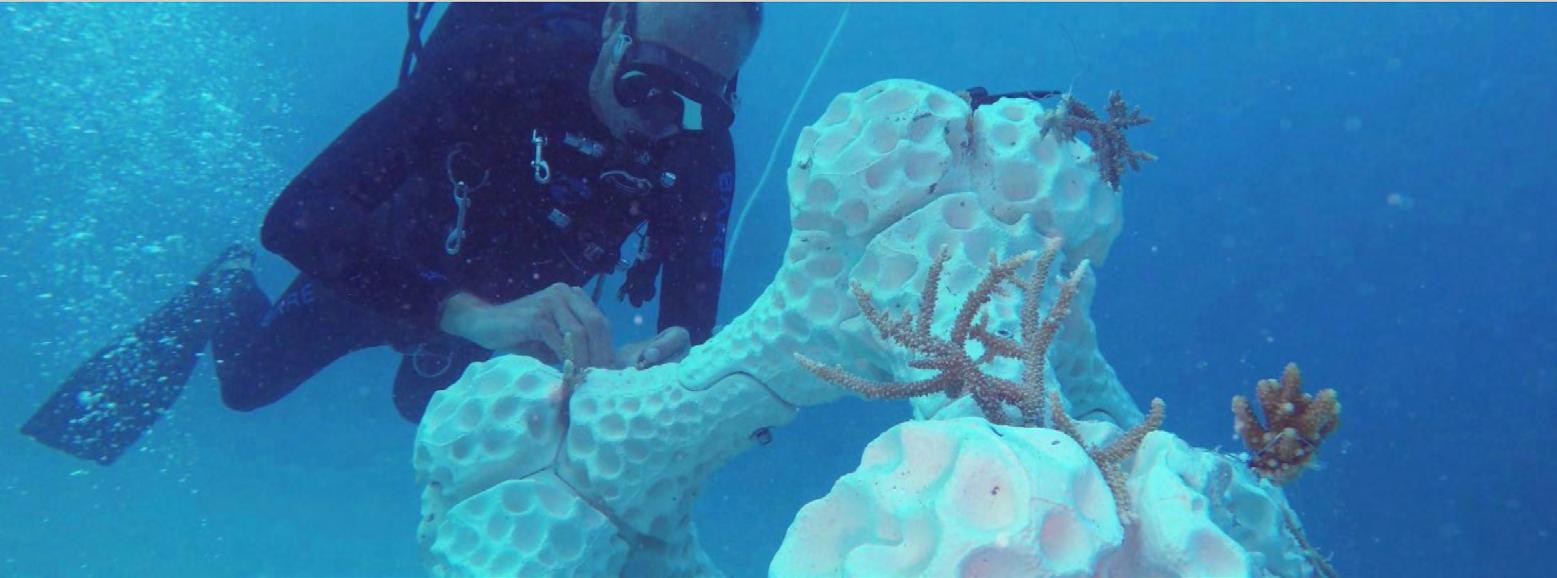
In an era where our oceans face threats from every angle—be it climate change, plastic pollution, or unsustainable fishing practices—the call for innovative solutions has never been louder. Cuttingedge technologies showcase human ingenuity, providing hope for preserving marine ecosystems. From the restoration of coral reefs to the ambitious efforts to cleanse our oceans of plastic, science stands at the forefront of conservation.
Coral reefs, the ocean’s metropolises, harbor a quarter of all marine species, despite occupying a mere fraction of the ocean floor. However, these vital ecosystems are in danger due to rising sea temperatures and acidification. A team of MIT engineers has turned to 3D printing technology to fabricate artificial reefs, providing a sanctuary for coral larvae to flourish and increasing coastal protection from major storms. They recently shared their findings in a study published in PNAS Nexus, an open-access journal put out by the National Academy of Sciences.
The battle against plastic pollution has led to the deployment of autonomous systems designed to ensnare debris
drifting in the marine abyss. Projects like The Ocean Cleanup Project use the ocean’s currents to collect debris, from heavy objects to sneaky microplastics, with the aim of significantly purging our waters of this man-made blight. These initiatives collect and concentrate the trash for removal by carefully arranging floating barriers in strategic places. To prevent additional harm to marine life, the gathered debris can then be recycled or disposed of appropriately.
Additionally, sustainable fishing practices are crucial for preserving the balance of marine ecosystems. With the aid of satellite monitoring and electronic reporting, the fight against illegal fishing gains momentum, ensuring the longevity of fish populations and the health of our oceans.
These technological marvels are not just isolated victories; they are part of a broader narrative of conservation that resonates deeply with the mission of the Orlando Science Center’s Life exhibit. Life promises an immersive exploration of the intricate relationships between humans and the natural world. Featuring diverse habitats, including the ocean’s
vast expanse, this exhibit aims to stir hearts and minds towards a greater understanding and appreciation of our planet’s living tapestry.
Life aims to empower visitors by connecting scientific innovation with public engagement, providing visitors with the knowledge and motivation to join conservation initiatives. As we marvel at the technological feats aiding ocean conservation, let us remember the role we each play in this collective journey. Together, inspired by Life, we can work towards a sustainable future, ensuring the prosperity of our blue planet for future generations.
At this crucial moment, the fusion of technology and conservation efforts points the way forward. This is a call for action, underscoring that although technology provides powerful tools to restore our oceans, success ultimately depends on us. Together, inspired by Life and empowered by knowledge, we can navigate towards a future where the oceans, teeming with life, are preserved and cherished, ensuring a lasting legacy for the planet.

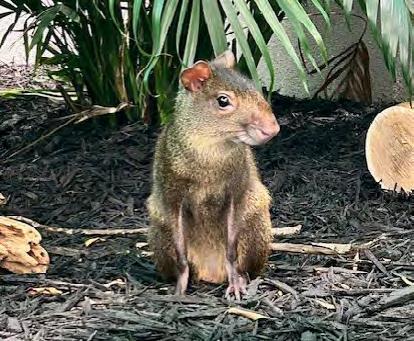

Life is now open at Orlando Science Center! With three immersive habitats, Life is the biggest exhibit construction project we’ve undertaken in our history. Life tell s the story of our planet through the animals that call it home.
Dive into beautiful coral reefs in the Ocean and meet the little invertebrates that maintain them - not to mention a shark and tropical fish! Get hands-on with the creatures in our touch pool, including horseshoe crabs, lobsters, sea cucumbers and sea stars.
Lounge in the shade of our iconic cypress tree and meet a few Florida natives in the Swamp below. From burrowing owls and
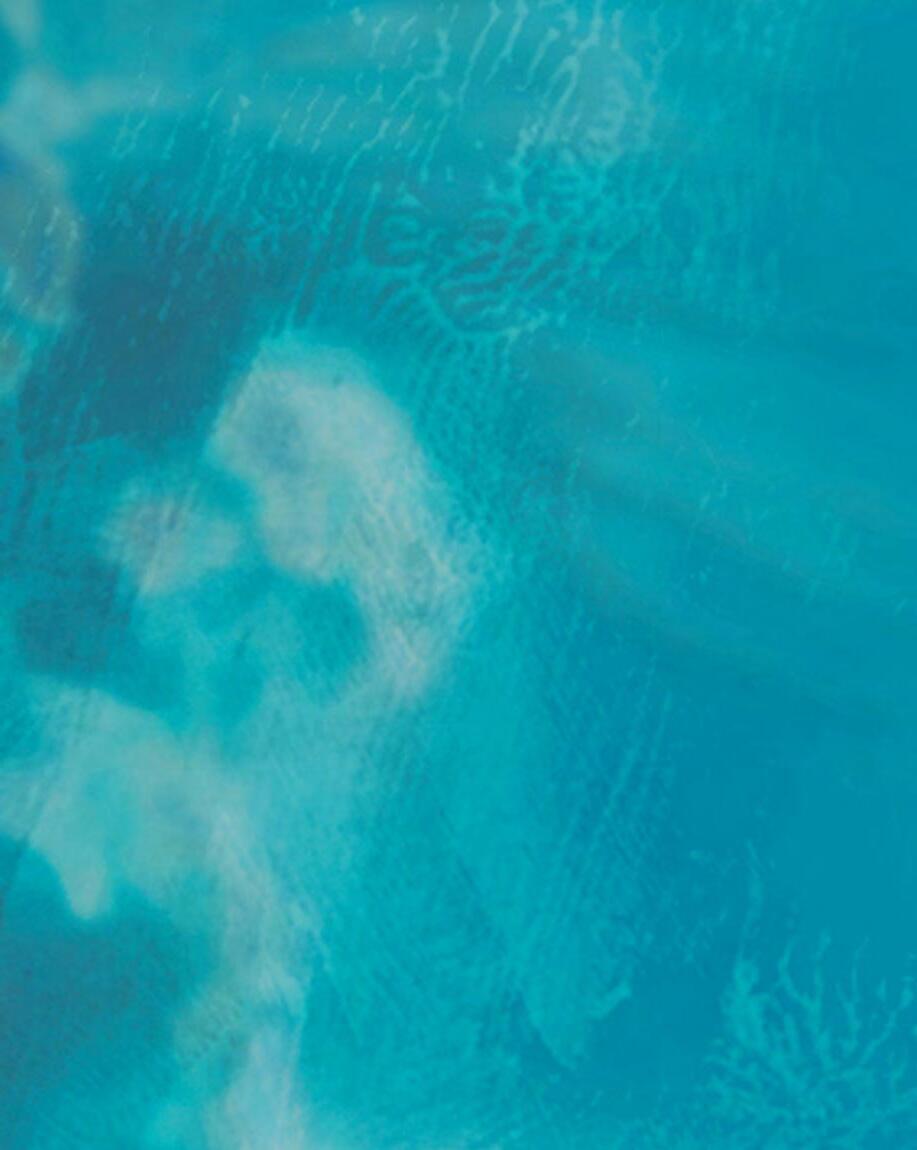
gopher tortoises to American alligators and freshwater turtles, Floridians have some interesting neighbors!
Step into the warm, lush landscape of the tropical Rainforest and say hello to playful monkeys and a sleepy sloth as songbirds sing and swoop above you. Or simply relax to the sound of a 17-foottall waterfall cascading down into a pool filled with vibrant, freshwater fish.

There’s a great deal of science involved in caring for aquatic ecosystems. Maintaining an exhibit like the Ocean habitat in Life requires more work than just understanding the species and what they eat. We need to know the exact chemistry of the water.
Ammonia, nitrites, and nitrates are all chemicals produced during the nitrogen cycle. Some are toxic to fish, while others are okay in certain levels. pH is a measure of the acidity or basicity of a liquid. Marine waters usually have a pH of 8.2, while most freshwaters have pH values between 6.5 and 8.0. Salinity measures the water’s salt content and temperature measures the warmth or coolness of the environment.
Our animal care team monitors these levels every day to ensure our aquatic animals have the best possible environment for their home here!
Over time, Earth’s oceans have absorbed more and more excess carbon from the atmosphere, leading to a reduction in the pH of the water. Over time, this increased acidity may have devastating affects on marine life ecosystems Learn more about how you can help prevent ocean acidification in the Ocean gallery!
Every animal exhibit in Life includes at least two species. For example, our gopher tortoises (Gopherus polyphemus) share an exhibit with our Prevost’s squirrels (Callosciurus prevostii). This makes creating nutritional plans and diets for our animals a little more complicated than it might be for a single species exhibit.
Gopher tortoises generally have a diet of foliage, seeds, and fruits. Prevost’s squirrels eat fruit, nuts, seeds, buds, flowers, insects, and bird eggs. While the gopher tortoises are ground-dwelling creatures, the squirrels can maneuver all over the exhibit. The animal care team must ensure that nothing in the tortoises’ diets could be harmful to the squirrels because they can sniff around the tortoises’ meals.
We must also consider the amount of food each animal gets; if the squirrels eat the tortoises’ food in addition to their own, both species are now affected by the food available to them. It’s important to make sure both species are getting the nutrients they need to live happy, healthy lives. Everything in Life has a balance – including diets!
When plants or animals that aren’t native to an ecosystem are introduced, they can really interfere with the local food web. Learn more about invasive species in the Swamp gallery!
Living in Florida, we love air conditioning. Our climate is hot and humid almost all year long, so we crank up our AC in Summer, Spring and Fall. If you don’t need a sweater outside, you probably need one inside.
The species that live in our Rainforest, such as our Hoffman’s two-toed sloth (Choloepus hoffmani) and the golden-headed lion tamarins (Leontopithecus chrysomelas), are used to consistent temperatures around 83 degrees, with humidity levels between 77% and 88% year-round. So how did we create a tropical rainforest inside our building in the middle of Florida?
To maintain the right conditions, the Rainforest was designed and built to have its very own thermostat and humidity sensors that run separately from the rest of the building. You might not imagine engineers being integral to an exhibit about biology and ecology, but the Life exhibit couldn’t exist without good engineering.
Rainforests are great at absorbing excess carbon in our atmosphere and turning it into oxygen for us to breathe. The destruction of rainforests is contributing to global warming and the overall climate crisis. Learn more about how you can prevent deforestation and contribute to reforestation in the Rainforest gallery!

Can you break a world record?
Challenge yourself, your family, and your friends in our newest traveling exhibit, The Science of Guinness World Records, presented by Nemours Children’s Health! Discover the world’s most extraordinary record holders and what it took to cement their names in history books. You can also try your hand at becoming a part of history yourself!
From the most drum beats in 60 seconds (over 2,109 beats…or 35 per second!) to the most consecutive pinky pull-ups (36!), humans can do extraordinary things and have set out to achieve incredible feats beyond belief.
In The Science of Guinness World Records, you can set records, challenge old ones, and make history. And now you can explore the science behind the most mesmerizing accomplishments made by humans worldwide.
Learn the physical demands humans endure to achieve the seemingly impossible. Test your hang-time abilities on the hanging bar for a high score, engage in friendly rivalry with your friends in a cup-stacking extravaganza,
outlast the ghosts in the world’s largest Pac-Man video game, or challenge your memory with puzzles while experimenting with tricks to achieve memory mastery. Find out where your skills shine and hone new ones you never knew you had. With dozens of hands-on activities, you are sure to achieve greatness.
Get a behind-the-scenes look at the science involved in all these recordbreaking challenges. To obtain a Guinness World Record, the challenge must be repeatable, measurable, breakable, standardizable, and able to provide evidence of accuracy - much like scientific research! Age, speed, and perception can affect reaction time, strength, focus, and endurance, ultimately changing the outcome. Put yourself to the test and uncover the skills that make you awesome.
Become a champion and try for a high score in the Attempt Arenas, gain inside knowledge behind breaking records from multi-title-holding scientists, and attempt as many times as you want. Register your achievements by creating your unique avatar, which
tracks your progress throughout the exhibit! Be sure to check the event schedule for your opportunity to impress actual Guinness World Records™ adjudicators and become OFFICIALLY AMAZING™!
It’s your turn, Orlando Science Center… are you ready to Achieve Amazing?

Member’s Perk Alert!
Members are invited to an exclusive first look on Saturday, May 25, from 10:00 am - 12:00 pm.

Drawing on decades of work by the world’s most famous living ethologist and environmentalist, Jane Goodall: Reasons for Hope, is an uplifting journey around the globe to highlight good news stories that will inspire people to make a difference in the world around them.
Featured stories such as the Northern Bald Ibis’ migration over the Alps, the re-introduction of the American Bison by the Blackfeet Nation, the worldwide recognized Sudbury Regreening Story, and inspiring youth-led initiatives involved
in Jane Goodall’s Roots & Shoots organization align with historic footage of Jane’s beginnings as a chimpanzee researcher.
The film reinforces Jane’s four pillars of hope that signal tremendous promise for the future: the amazing human intellect, the resilience of nature, the power and dedication of young people, and the indomitable human spirit.
Jane Goodall revolutionized how we view the world around us. Join her on this adventure of inspiration and hope.
See what is now playing, check show times, watch trailers, and more at osc.org/theaters.
DR. PHILLIPS CINEDOME
MAY
Cuba
Dinosaurs of Antarctica
Forces of Nature
Journey Into Amazing Caves
Mysteries of the Unseen World
Sea Monsters: A Prehistoric Adventure
JUNE
Air Racers
Dream Big Flight of the Butterflies Into America’s Wild
The Living Sea
The Ultimate Wave Tahiti
JULY
Amazon Adventure
Apollo 11: First Steps Edition
Coral Reef Adventure
Journey to Space
National Parks Adventure
The Last Reef
Volcanoes: The Fires of Creation
AUGUST
Jane Goodall’s Wild Chimpanzees
Great Bear Rainforest
Everest
The Magic of Flight
Robots
Great Bear Rainforest
ALL SEASON LONG!
Jane Goodall: Reasons for Hope
Back from the Brink: Saved from Extinction 3D
MAY
Clear Water, Clean Water? Exploring the Floridan Aquifer
JUNE
Horseshoe Crab: Prehistoric Paramedics
JULY
Back to the Wild In Florida
AUGUST
Are you a budding builder, excellent embroiderer, or a maker in the making? If you can imagine it, you can make it during Maker Month! Roll up your sleeves and get ready to make some memories and add some skills to your metaphorical toolbelt!
What’s the best kind of mess? The kind YOU don’t have to clean up! It’s Messy Science Month at OSC, so we’re pulling out the ooiest, gooiest, slimiest, most splat-tasic hands-on activities, shows, experiments, and more all month long – culminating in the messiest event of the year! JUNE 8 & AUGUST 10
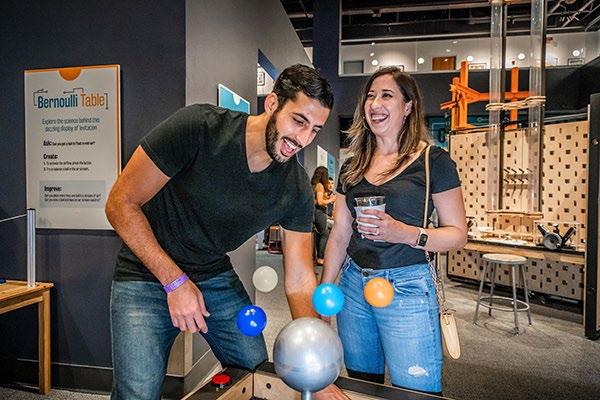

3.. 2..1.. Blast off to Orlando Science Center during Astronomy Month! Join us as we explore the solar system and beyond, launch hands-on astronomy and engineering challenges, learn about the science of rockets, and more!
We’re building curiosity during Engineering Month presented by FINFROCK! Step into the role of engineer as we learn about the skills it takes to invent, innovate, design, build, maintain, and improve the world around us! MAY 26 – AUGUST 13 The
Shack’s Celebration of Running 5k* Presented by AdventHealth 7:30 am Start
11 & 12
Making messes and mistakes is an important part of science. Experience the ooiest, gooiest, MESSIEST science lesson ever as we learn about colorful chemistry, flashy physics, and splattacular science!
15 & 16
Celebrate the maker movement by learning a new skill and meeting some of the expert craftspeople who are (literally) making a difference in our community. Whether you’re a professional maker or exploring a new hobby, everyone has something exciting to learn.
JULY 20 & 21
Blast off into Astro Fest with us! All weekend long, explore our solar system with hands-on astronomy and engineering challenges. You might get the chance to launch your own rocket!
AUGUST 17 & 18
Are you ready to build curiosity? Step into the role of an engineer with us as we learn about the skills it takes to innovate, design, build, and maintain to make the world a better place.
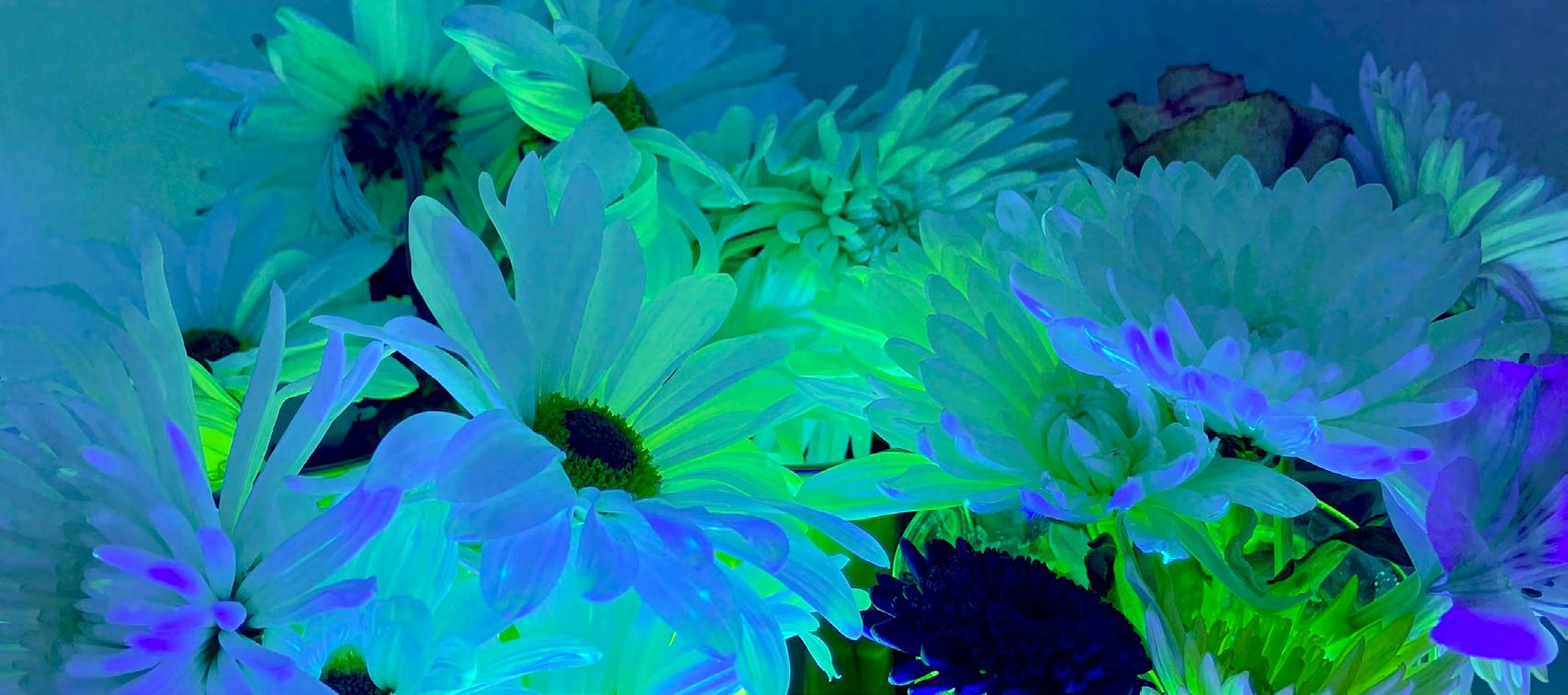
Step into the enchanting world of ultraviolet (UV) fluorescence with your own home-grown flowers! Water uses the power of capillary action, which helps water defy gravity to travel up from the roots through the stem and then the leaves!
MATERIALS
• Water
• Highlighters
• Vases or containers
• Scissors
• White flowers (like carnations) or celery stalks with leaves
• Blacklight
Click here for a DIY Blacklight Hack
1. Trim the stems of your flowers with adult supervision. Do so under the water at an angle. This helps make sure the stem does not sit on the bottom of the glass. It also stops air bubbles from forming. Air bubbles can stop the water and ink from being drawn up.
2. With an adult’s assistance, open a highlighter and twist the felt tip out with your hands!

3. Add the tip and the rest of the ink in the highlighter into your water. Use about 20-30 drops per half cup of warm water. Warm water will be absorbed more readily than cold water.
4. Let the flowers sit for a few hours. A full change in the flower petals might take 24-48 hours. White carnations work the best, but you can try with any flower or even celery! Experiment with the different choices to find your favorite!
5. Place the flowers under a UV light to see the petals glow! This simulates what flowers look like to certain butterflies and bees that have the amazing adaption to see ultraviolet light reflect off flowers in nature.
SAFETY: Handle UV light sources with care and avoid direct exposure to eyes and skin.
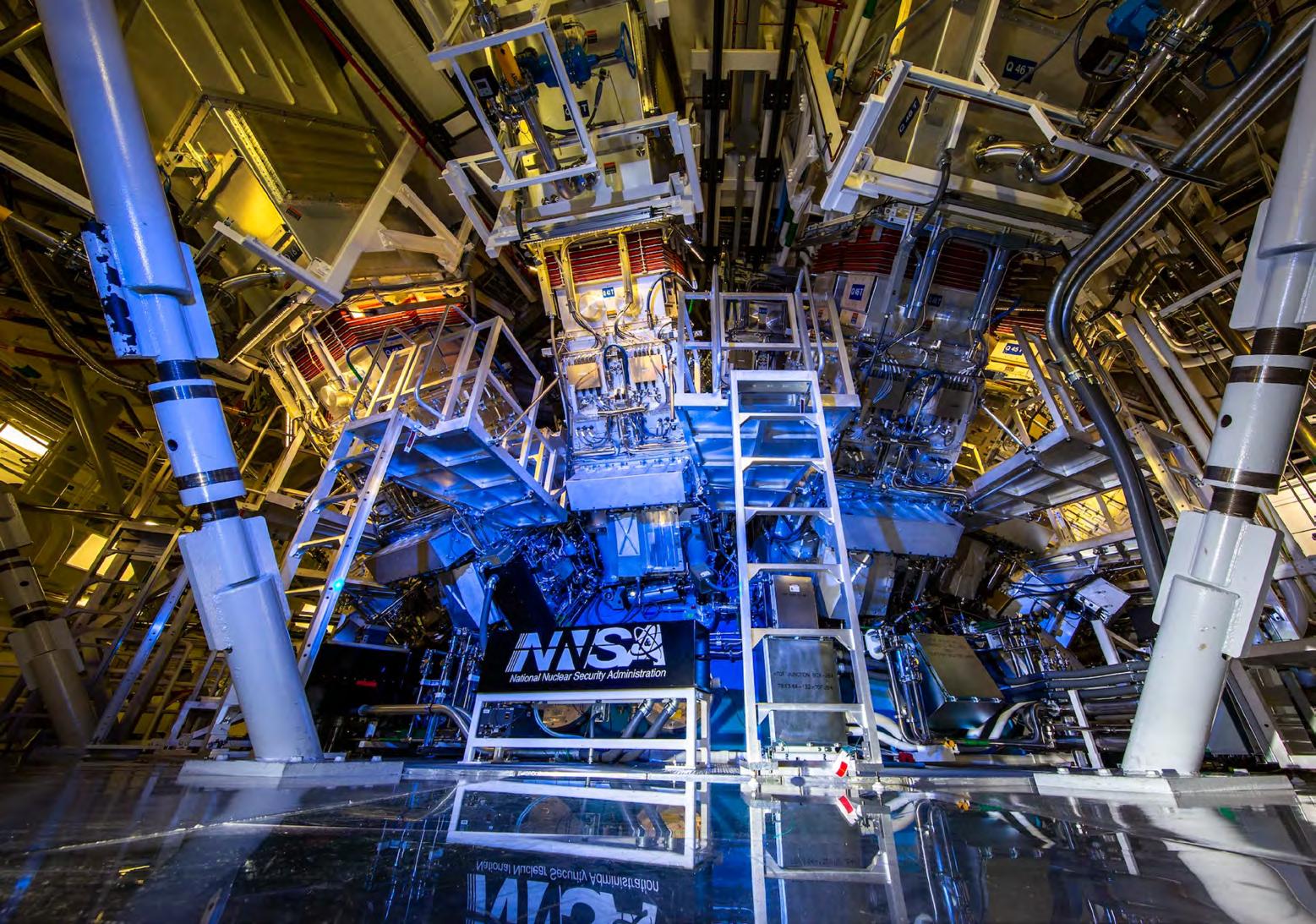 By Dr. MJ Soilleau, OSC Scientist in Residence
By Dr. MJ Soilleau, OSC Scientist in Residence
Something wonderful happened at the Lawrence Livermore National Lab (LLNL) on Dec. 5, 2022. For a brief moment, a miniature star was born!
This was the first demonstration of controlled fusion ignition in a lab setting. By definition, ignition occurs when a fusion target generates more energy output than the energy input. Fusion occurs when the positively charged nuclei of two or more elements are combined to form a new, heavier element.
What was the big deal? After all, hydrogen (H) nuclear fusion was achieved here on Earth in 1952 when
we exploded the first hydrogen bomb, or H-bomb. This explosion, nicknamed Mike, yielded the same energy as 10.5 megatons (MT) of TNT.
The Sun’s core does this on a colossal scale, producing the same energy as 90 billion 1-MT H-bombs every second through hydrogen fusion. This reaction is sustained by high pressure (100 billion times Earth’s atmospheric pressure) and high temperature (15 million C°/ 27 million F°).
To produce fusion on Earth, scientists needed to produce conditions equivalent to that of the Sun’s core. They did this using nuclear fission, which creates energy by splitting
atoms. This is the science behind the atomic bomb, or A-bomb. Basically, hydrogen bombs need atomic bombs to ignite the fusion reaction
The fusion that occurs in an H-bomb is not controlled. What makes LNLL’s achievement so great is that they subverted the need for nuclear fission as a precursor to nuclear fusion, controlling the process.
To do this, the National Ignition Facility (NIF) at LLNL uses the world’s highest energy laser to fuse two isotopes of hydrogen, called Deuterium and Tritium (DT), to make helium (He), neutrons, and lots of energy! Click here to watch a simulation of the event.
The mass of the fusion products is less than that of the DT. That difference in mass is the “m” in Einstein’s equation: E = mc 2 . This is the source of energy generated by fusion.
The energy generated by fusing one gram of DT is the equivalent of burning 3,500 gallons of oil! The LLNL ignition event used 0.000001 grams of DT to produce over 3 million joules (MJ) of energy. The resulting helium and proton (p) are highly energetic, and these products fuse DT. This, in turn, produces additional hot helium and neutrons that fuse more DT until the fuel (DT) runs out.
Positively charged nuclei repel each other with unlimited force if you try to force them together. This is known as Coulomb’s law, and the repulsive force between like charges is called the electromagnetic force. The electromagnetic forces between two charged nuclei create a force barrier known as the Coulomb barrier.
The nuclear force (or strong force) holds protons and neutrons together inside the nucleus. It is 137 times stronger than an electromagnetic force. However, the strong force range is very short, reaching only the diameter of the nucleus and no further.
The 500 trillion-watt NIF laser heats and compresses the DT to over 100 million °C (180 million F°) and 100 billion Earth atmospheres of pressure. This forces the positive charges close enough that quantum tunneling can fuse the nuclei through the Coulomb barrier. Quantum tunneling is described by quantum mechanics, the abstract and highly mathematical physics of the very small. Richard Feynman, who received the Nobel Prize for developing Quantum Electro Dynamics (QED), famously said, “No one understands
To achieve the conditions for quantum tunneling, the laser at NIF must travel quite a distance through many amplifiers – which is why it took an 85foot tall, three-football-field-sized laser facility to produce fusion ignition. Near the center of the NIF building, a tiny fiber laser fires a “seed pulse” that is 20 billionths of a second in duration. The seed pulse is split into 192 beams and amplified more than a quadrillion (1015) times as it travels 1,500 meters to the 10-meter diameter target chamber.
As the beams enter the chamber, the infrared laser light’s frequency is tripled to the ultraviolet and focused into a cylinder called a hohlraum, which is about the size of a pencil eraser. Inside the hohlraum is a bead the size of the point of a ballpoint pen that contains the DT. The 192 half-meter-diameter beams must arrive at the target within a billionth of a second of each other and to a spatial precision less than the diameter of a human hair.
The beams do not directly interact with the fuel; rather, they irradiate the walls
of the hohlraum. This produces a bath of energetic X-rays that implode onto the bead, heating and compressing the fuel and forcing the positive charges close enough to achieve nuclear fusion.
Bottom line: success! On Dec 5, 2022, laser energy input into the target was 2.05 MJ, and the output was 3.15 MJ. That means NIF increased the energy input by 1.5 times.
Many more ignition events have happened since then, with the best thus far almost doubling the energy. These results ignited renewed efforts, including private investment, to make fusion energy part of our energy future!*
*Note: The fusion in the NIF is a million times higher energy density than in the Sun’s core! Ask a Scientist online if you want to explore that profound statement or have other questions.
Check out this website for more info about the NIF laser and target, as well as a simulation that allows one to “ride along” with the laser pulse as it is generated, amplified, directed to, and interacts with the target.

Humans have not set foot on the moon in over 50 years - not since the four year period from Neil Armstrong’s first steps to 1972’s Apollo 17 mission. NASA is ready to change that, recently entering a new golden era of space exploration using advancements in technology and space engineering for the Artemis missions.
NASA has launched the Power and Propulsion Element (PPE) project as a crucial part of the Artemis campaign’s second stage. The PPE sustains the solar electric space station, Gateway, enabling extended stays for astronauts and facilitating high-rate communications between Gateway, the lunar surface, and Earth while remaining in the Moon’s orbit. This technology will not only support Artemis missions but will pave the way for future human exploration of Mars.
Behind the scenes of this technological achievement are individuals at the NASA Glenn Research Center driving the Artemis missions forward. Among them is Phuong Marangoni, a Vietnamese American whose sights are set on the Moon. As the Deputy Project Planning and Control Lead of NASA’s PPE project, Marangoni reflects on her humble beginnings.
Having immigrated to the US as a young girl, Marangoni’s parents emphasized education as a top priority. However, finances were an obstacle. Determined
to find educational growth opportunities, they came across the NASA Glenn Research Center program, a free program at a local community college that offered science, technology, engineering and mathematics (STEM) programs to underrepresented communities.
“I loved every minute of it,” said Marangoni. “It was one of the very few, if not the only, opportunity I had that cemented my career goal to some degree.”
Fueled by her newfound passion for STEM, Marangoni went on to receive her bachelor’s degree in computer engineering at Wright State University, then pursued her master’s degree in engineering management from Penn State. Upon graduation, she met a roadblock.
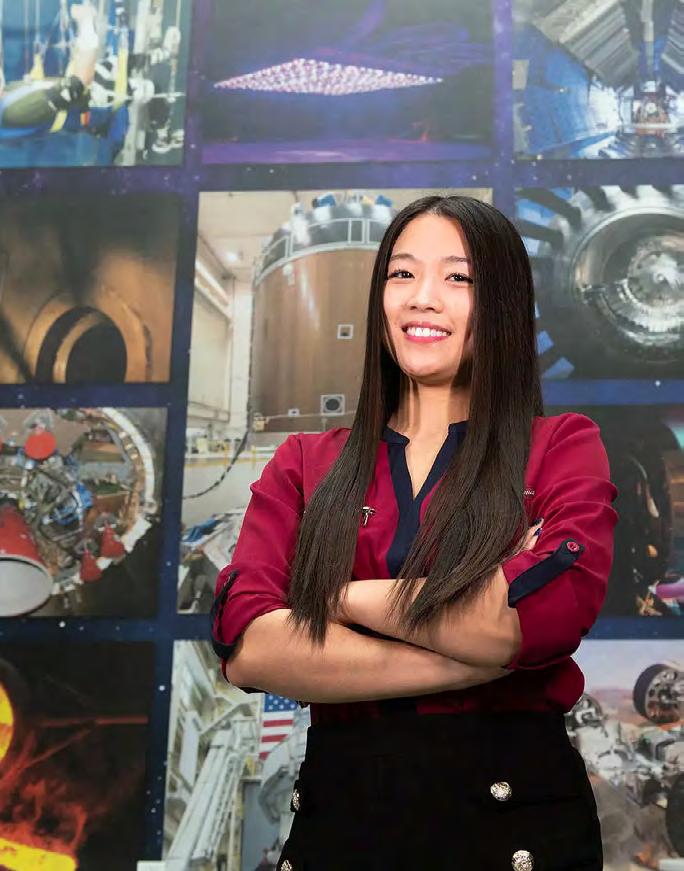
with a STEM-related bachelor’s degree. But diversifying STEM fields can bring new perspectives on problem-solving solutions. Marangoni knew she had to forge her own path, with no one’s footsteps in which to follow.
“I grew up in an environment where my surroundings were simply different, so I lacked role models I could relate to,” she said. “It was hard to envision who I saw myself to be or what I wanted to do.”
According to the National Center for Education Statistics, Asian American women make up 5.5% of Americans
Spurred by her experiences overcoming similar obstacles, Marangoni persevered, and it led her to a career at NASA Glenn Research Center - a full-circle experience. She believes that a career in STEM will open many opportunities for anyone willing to put in the work, no matter the challenges they face.
Dr. Joey Nelson knew from a young age that he was gay. Born to a Mexican father and a white mother, Nelson identifies as queer – a formerly derogatory term which many members of the LGBTQ+ community have reclaimed in recent years.
“Growing up in North Carolina as a nonpassing gay boy, science served as a haven for me,” said Nelson in an interview with Scientific American. “I demonstrated aptitude for science, and had great teachers, professors and counselors who encouraged me to pursue it.”
The woods by his childhood home were a playground for Nelson. He combined his curiosity about the world around him and his interests in environmental science and math into a career in geology. He is currently conducting research and development efforts and managing the Research Science team at Heirloom, an environmental services organization that aims to develop the world’s most cost-effective carbon dioxide removal technology.
In addition to his geological research, Nelson was part of the team of analysts to interpret a major survey by the organization Queer in STEM, which is dedicated to the nationwide study of sexual diversity in science, technology, engineering, and mathematics (STEM) fields. The main goal of the study was to gain an understanding of the experiences of sexual and gender minorities in STEM fields.
“Are they out? Are they succeeding in their careers?” asks Nelson. “What kind of barriers do they face? What does a welcoming climate look like? What does an unwelcoming climate look like?”
This kind of questioning was not new territory for Nelson. He once doubted his place among geologists due to outdated stereotypes that masculine people are better suited to the outdoor work associated with the field.
“You’ve been in the woods since you were a little kid interested in these things,” Nelson reminded himself. “This is first and foremost where you belong.”
The Queer in STEM survey found that while about 60 percent of LGBTQ+ scientists and engineers were openly queer in their personal lives, only 16 percent were out at work. Those who reported as openly queer at work reported harassment and hurtful comments pertaining to sexual orientation more often than heterosexual individuals. The study looked at transgender and nonbinary scientists in a separate portion of the survey and found similar results.
Many queer scientists clearly choose not to openly claim their gender identities or sexual orientations. For this reason, many queer individuals have trouble envisioning themselves as STEM professionals. They don’t see anyone in those fields that look or feel like them. Even Nelson didn’t
have an openly queer mentor in STEM –but he’s trying to change that for future generations.
“To me, visibility is huge,” Nelson said. “I am out. I have been out for a long time, and I am not just in my personal life, but in a professional setting.”
Nelson acknowledges feeling privileged to face minimal discrimination for his sexual identity, and as such believes it’s his responsibility to be out in front of others. He encourages folks who feel similarly privileged to come out and be more visible to the younger generation.
“It’s been well documented that diversity means better science,” Nelson said. “This work is better understanding how we can support a component of diversity that is critical to the advancement of science in America.”
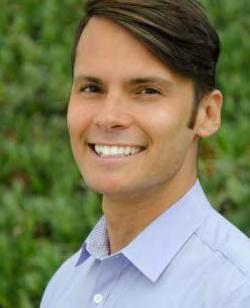
As we imagine astronomers and astrophysicists peering into space, we typically picture them staring into the sky or observing space through telescopes. Yet Wanda Díaz-Merced, an astrophysicist who lost her sight due to diabetic retinopathy, changed how we study space. She, along with a team of collaborators, invented sonification, which turns space data into sound. This breakthrough helps scientists explore deep space and discover hidden phenomena invisible to the human eye.
Díaz-Merced found innovative methods to continue her research despite facing vision loss, proving that scientific discovery is not limited to the visual realm. “What people have been able to do, mainly visually, for hundreds of years, now I do it using sound,” DíazMerced explains.
To help you understand sonification, let’s look at a parallel example. Imagine using a metal detector on the beach, where it beeps louder as you get closer to hidden treasure—this concept is similar to sonification!
Díaz-Merced teamed up with Anton M. Schertenleib and Robert M. Candey at NASA to use a tool named xSonify. Just like a metal detector helps you find treasures by turning unseen metal into sound, this software, freely available on NASA’s website, transforms intricate space x-ray data into sounds we can interpret, allowing us to “hear” the cosmos.
Sonification isn’t just about making cool sounds from space data. It’s a serious scientific tool that helps scientists uncover hidden patterns in the data—like finding a needle in a haystack with your ears! By listening to the data, Díaz-Merced can identify changes in starlight and discover secrets about the universe that might be hard to see, but not to hear.
Her work in sonification has led to significant contributions to astrophysics, opening new avenues for understanding celestial phenomena. Converting data from telescopes into auditory signals enables Díaz-Merced to discern patterns and anomalies that might be missed visually. This method has proved useful in detecting variations in starlight from variable stars, where even minor changes can hold critical insights .
Díaz-Merced’s story is a beacon of inspiration for aspiring scientists, demonstrating the power of resilience and creativity in overcoming obstacles. Her experience amplifies the message that science belongs to everyone, regardless of their physical abilities. By leveraging sound to unlock the secrets of the
cosmos, Díaz-Merced not only continues to contribute to our understanding of the universe, but also champions inclusivity in the scientific community.
As Orlando Science Center prepares to inspire the next generation of scientists, stories like Díaz-Merced’s remind us of the boundless ways to explore the natural world. Her journey from visual observation to auditory analysis exemplifies the innovative spirit that propels science forward, ensuring that exploration and discovery are accessible to all, echoing through the stars and beyond.
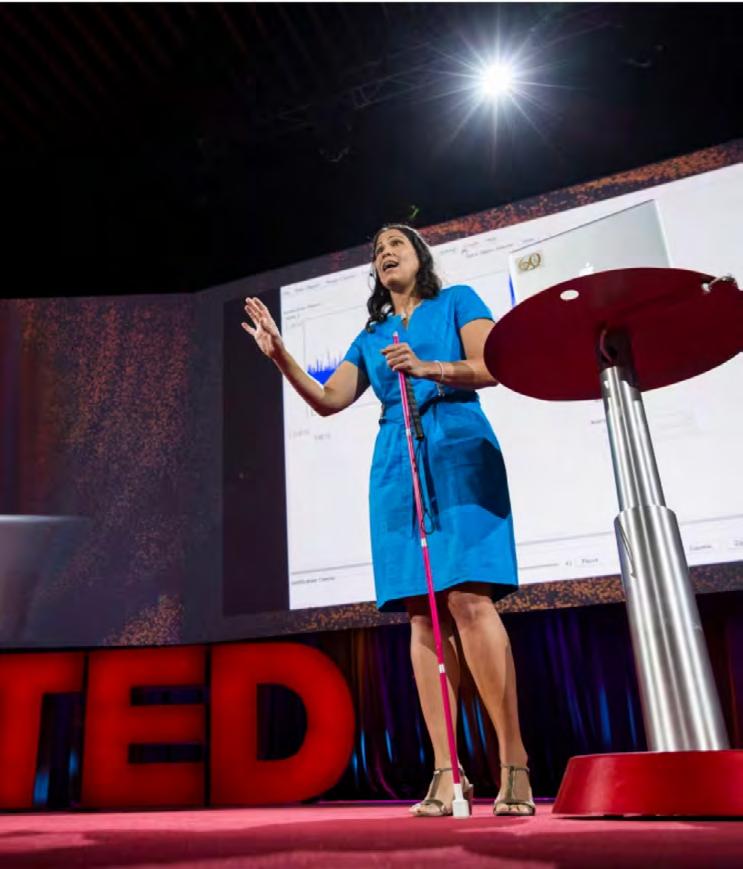
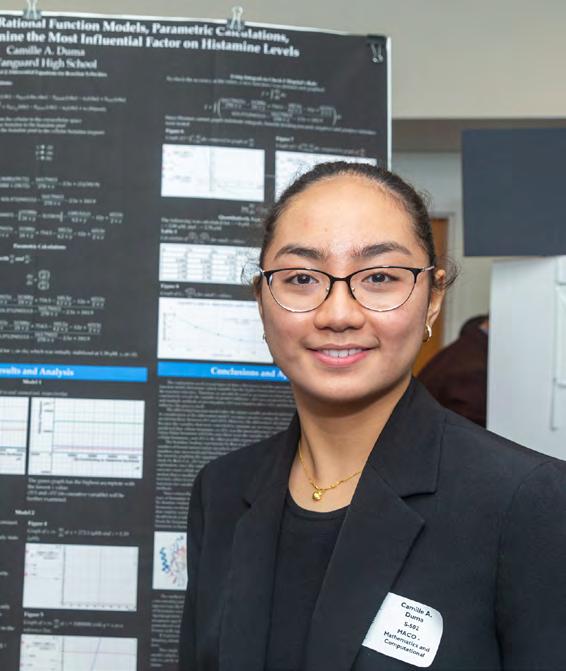
Action. She has also been granted admission to five in-state colleges and universities. While she will not compete in the Science Fair this year, she has begun mentoring underclassmen who are interested in participating.
Each year, Orlando Science Center hosts the Lockheed Martin Science Challenge with the goal of providing county science fair winners an opportunity to present their projects to a team of expert judges before advancing to the state science fair, allowing them an extra chance to practice their presentations. We’re excited to share an update on our 2023 Best in Fair winner, Camille Duma.
Duma, now a senior at Vanguard High School, won the 2023 Science Challenge with her project titled “Application of Michaelis-Menten Rational Function Models, Parametric Calculations, and Differential Equations to Determine the Most Influential Factor on Histamine Levels.” In layman’s terms, she applied complex mathematical equations to identify the most significant compound in the chemical reaction that takes place during an allergic reaction.
With this same project, Duma went on to receive 2nd place in the State Science & Engineering Fair, where she was also awarded an $86,000 scholarship from the Florida Institute of Technology. She advanced to the International Science & Engineering Fair (ISEF) in Dallas, Texas, where she was awarded 4th place in the mathematics category. Duma was also awarded the Karl Menger Honorable Mention Award from the American Mathematical Society.
“I was overwhelmed when my name was called on the stage,” she told us, “because there were around 1,600 ISEF delegates who came from different regions and countries. I was hopeful, but I wasn’t expecting such a blessing.” Duma was recently accepted to Massachusetts Institute of Technology (MIT), where she applied Early
“It is fulfilling to know that I am helping pass that legacy of enthusiasm in science to others,” Duma told us. “I plan to become a research scientist someday, and my eight years of experience of doing science fair have truly helped me navigate the field of research.”
We are so proud of Duma and the exceptional success she has achieved since winning the Lockheed Martin Science Challenge. We look forward to seeing what she accomplishes in the future, whether it be at MIT or elsewhere, and we’re honored to be part of her story.
“Orlando Science Center and the Lockheed Martin Science Challenge have played a pivotal role in motivating me to develop my research,” she told us. “My Best in Fair win became the precedent to the good luck that I received in 2023. I am deeply grateful to Orlando Science Center, all its stakeholders, and the founders of the Lockheed Martin Science Challenge for believing in me and recognizing my potential.”
It’s never too early to prepare! We have competitions for scientists of all ages, from Grades K-12. While our Science Competitions take place in the Spring, you can find information year-round on our website. Visit osc.org/competitions to learn more.
We recently sat down for an exclusive interview with Dr. Sarah Layton, renowned philanthropist and presenting sponsor of Orlando Science Center’s latest and largest endeavor, the Life exhibit. Layton shared the deeply personal journey that led her to support this groundbreaking project.
Layton comes from humble beginnings, with parents that encouraged the values of hard work, perseverance, education, and the importance of giving back to others. Her upbringing instilled in her a deep sense of passion to make a meaningful impact on the world around her. She credits Central Florida for providing her with opportunities to thrive and a home base from which to witness the diverse wonders of the world – from the amazing life in our reefs off the coast to the lush sea grass and marshlands further south.
Dr. Layton’s passion for STEM education and her affinity for animals, nurtured since childhood, deeply resonates with the essence of the Life exhibit. From her early fascination with chemistry, biology, and math to her awe-inspiring encounters with marine life during scuba diving adventures, she has always been captivated by the wonders of this amazing planet.
When she first learned of OSC’s plans for the Life exhibit, the story felt personal — a story shared by all who appreciate the beauty and complexity of the natural world. Driven by her inherited ethos of dedication to community and a desire to make a difference, she dreamed of making a significant impact on her community.


(Top) Layton holds a token of appreciation for her leadership and support from OSC – a hand-crafted sculpture inspired by her lifelong passion for the ocean. (Bottom) Dr. Layton had a close encounter with this bull shark during one of her many adventures in deep sea diving.
For Layton, the decision to support the creation of the new Life exhibit came from a sense of purpose to inspire curiosity, ignite imaginations, and foster a love of learning in children and adults alike. She recognized the pivotal role that science plays in shaping our understanding of our planet and saw the
exhibit as an opportunity to create a space where people could engage in the magic of science firsthand. Layton hopes Life will spark meaningful conversations about animals, conservation, and the little blue planet we call home. She’s also optimistic that Life will inspire the next generation of scientists, explorers, problem solvers and innovators with a lifelong love of learning.
Layton’s support for the Life exhibit extends beyond financial contributions; it reflects her belief in the power of science and STEM education to change lives. By investing in the exhibit, she hopes to create opportunities for people from all walks of life to explore, discover, and learn in a safe and inclusive environment alongside some of our most unique animal friends such as such as the sloth, shark, alligators, and monkeys.
For Layton, and we hope for many others, the Life exhibit is more than just a collection of plants, environments, and species — it’s a living testament to the wonders of science in our world and the importance of preserving it for the future. As the new exhibit opens its doors to the world, we are reminded of the profound impact that one person can have on the lives of many. Layton’s legacy as a visionary philanthropist and champion of STEM education will endure for generations. Through her unwavering dedication and tireless advocacy, she is leaving an indelible mark on the Orlando community and inspiring others to join her in shaping a brighter future. Learn more about the Life exhibit here.

Our inaugural Scientist in Residence, Dr. M.J. Soileau has a passion for learning and educating the community through STEM. You’ve asked him some of your burning questions and he has answered!
Answer: Sunlight is a mixture of all the colors of the rainbow. Each of the colors in sunlight have almost the same intensity. Our eyes perceive this mixture as white light. CAUTION: DO NOT LOOK DIRECTLY AT THE SUN!!! Serious eye damage can occur!
Light is a wave, and red light has a longer wavelength (distance between peaks of the wave) than blue light. The molecules of air are much, much smaller than the wavelengths of visible light. Therefore, the air scatters sunlight in all directions. The blue light in sunlight is scattered significantly more than the other colors, making the sky appear blue. This explanation is called Rayleigh scattering, named for the 19th Century British physicist who discovered it.
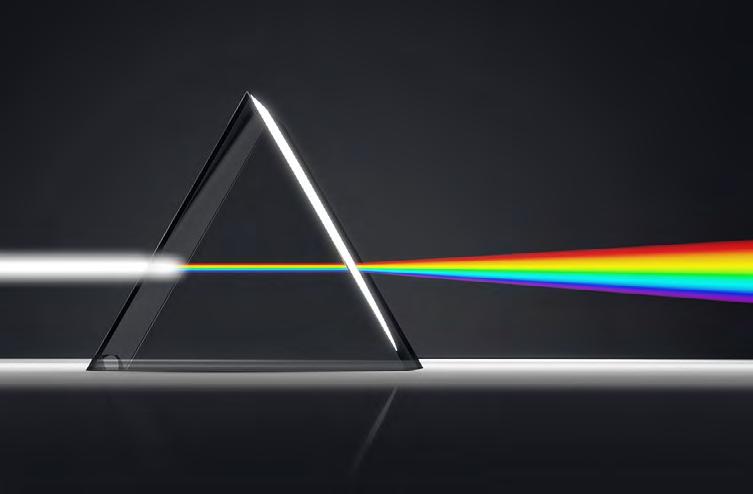
Answer: The short answer is yes! But let’s test it for ourselves:
Go to your refrigerator and pull off a magnet. Feel the force? That force is a measure of the strength of the magnetic field that holds the magnet firmly on the door.
Pick up something from the floor and then let go of the object again, and watch what happens. It falls to the floor! The force you feel in lifting the object and the force accelerating the object when you let it go are both due to the Earth’s gravitational field.
But what about the “force fields” used in science fiction stories like Star Trek? The short answer is that no, force fields do not exist in the way they’re depicted on these shows. However, we use high magnetic field to “contain” very hot, dense plasmas in experiments to do controlled fusion - which scientists are investigating as a solution to the clean energy problem. So in some ways, that concept is based in science. “The Force” in Star Wars, however, has no basis in scientific concepts.
Answer: Farts are a natural byproduct of eating a nutritious diet to supply our bodies with energy and nutrients needed for us to survive and thrive. Farts and poop are the waste products of our digestive process, which extracts the needed stuff from our food.
Why do farts (flatulence) smell so bad? The answer starts with the food we eat. For example, eggs (very healthy food) contain sulfur (S), which combines with oxygen to give us energy. The waste product of digesting eggs is sulfur dioxide gassometimes called rotten egg gas because it smells like rotten eggs…ugh! A lot of the food we eat (raisins, prunes, meat products, vegetables, soft drinks, wine and beer, etc.) contains sulfur compounds. A waste product of digesting that food is sulfur dioxide, which our bodies expel as smelly farts!
We invite you to submit any questions you have for Dr. Soileau to our Ask a Scientist forum, available on our website at osc.org/ask-a-scientist. You can also view the archive of questions if you want to stay updated. Keep an eye out for additional opportunities to engage with our Scientist in Residence!
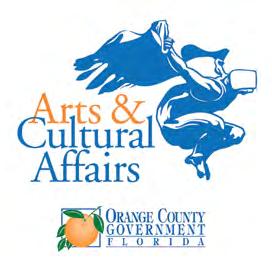
We are grateful to Orange County Arts and Cultural Affairs for their commitment to enhancing Orlando’s arts and cultural identity, presenting quality arts and cultural experience, and promoting tourism through their Cultural Facilities funding. With this generous funding, OSC was given the opportunity to provide renovations and repairs to our parking garage. Renovations include necessary repairs to ensure the integrity of the structures and safety of all visitors, wayfinding enhancements, and updates to the technological infrastructure to increase our ability to adapt to meet the growing needs of OSC and Loch Haven Park. Covered parking offers substantial benefits to all using the structure as an added level of safety from the elements.

Ignite Discovery, Orlando Science Center’s early childhood education outreach program, brings free, hands-on STEM experiences to preschool-aged children from low-income households. Ignite Discovery builds a strong and lasting foundation for our youngest learners to help them on their path to being the future leaders of the STEM workforce of tomorrow. This program is made possible in part through support from the PNC Foundation through their PNC Grow Up Great® initiative. Since 2004, PNC Grow Up Great has helped children from birth through age 5 develop a passion for learning that lasts a lifetime. Thank you, PNC Foundation, for all you do for our community.

We believe everyone should be able to engage in handson science learning and immersive STEM experiences. Thank you, First Horizon Foundation, for helping break down financial barriers to attending Orlando Science Center through our Science For All access program, which provides reduced-price admissions and family memberships for low-income households. The Science For All access program ensures those with the greatest needs have access to high-quality STEM learning at Orlando Science Center. First Horizon Foundation was founded in 1993 and has since donated over $100 million to local non-profits. Thank you for all you do to support the Science Center and the entire Central Florida community.

Orlando Science Center would like to extend a huge thank you to Michelle and Ryan DeVos for their generous support of our Neighborhood Science place-based outreach initiative. Neighborhood Science is a community initiative providing underserved youth throughout Central Florida free, high-quality STEM workshops for multiple days each week in afterschool programs and community centers, helping students gain the skills needed to pursue STEM careers. Through Neighborhood Science, OSC provides consistent, engaging STEM programming that ignites students’ passion for lifelong learning, sparks interest in STEM, and instills confidence in the future leaders in our community. Thank you, Michelle and Ryan for supporting this vital initiative, and helping us inspire science learning for life for all.
Orlando Science Center’s Corporate Partnership Program is a customizable sponsorship program designed with your company’s community engagement priorities in mind. This unique opportunity allows your company to support many areas of our mission, including workforce development and STEM education, while receiving year-round recognition through our exhibits, programs, publications, and special events.
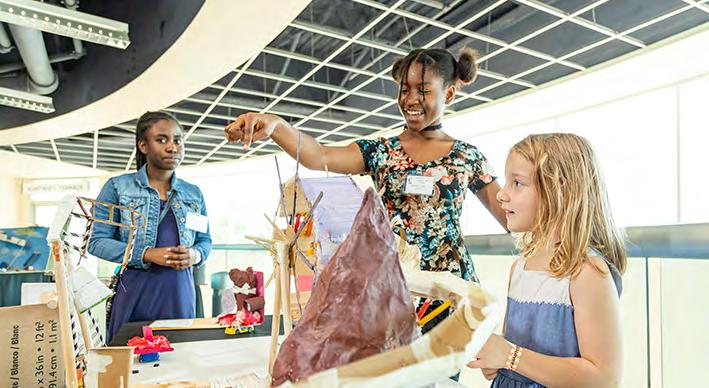
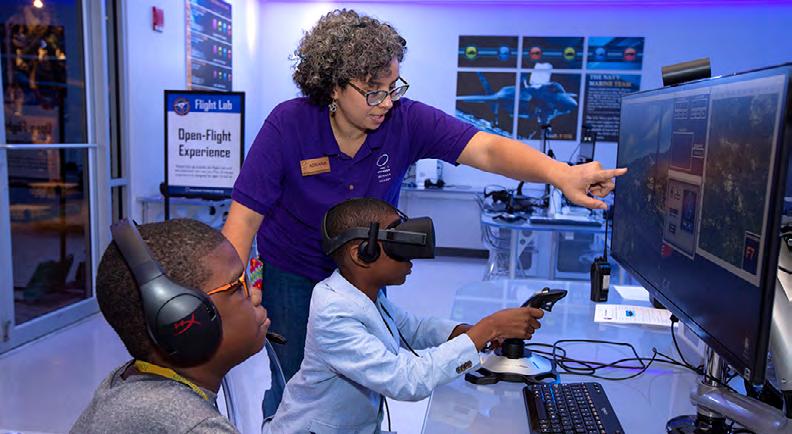

• Tickets to the Science Center and special events
• Engagement opportunities
• Invitations to exclusive receptions and VIP events
• Reach an annual audience of 600,000+
• Logo recognition and advertisements
• Support of workforce development through STEM education
• Plus much more
• Educational programs that bring STEM education to thousands across Central Florida
• Development of new high-quality exhibits and experiences
• Access for learners who experience OSC for free or reduced price
• Increased youth participation from cradle to career
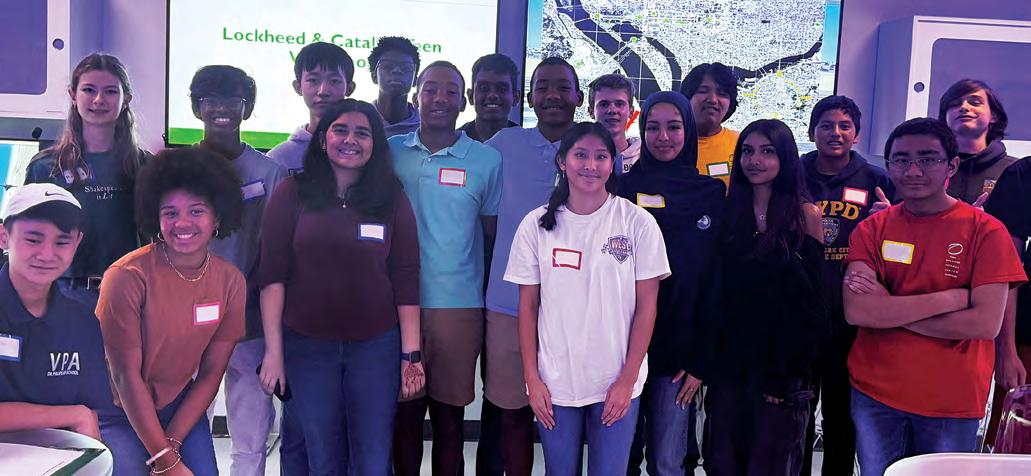
Lockheed Martin is committed to creating employment opportunities for those of different backgrounds, experiences, education levels and perspectives and prioritizes hiring the right people with the right skills to meet current and future needs. This includes helping to address a national skills gap.
By employing over 65,000 engineers who innovate every day, Lockheed Martin supports the mission of clients globally on the battlefield, in outer space, and everywhere in between.
But beyond their business need for brilliant STEM professionals, they know that our nation’s technological advantage and security depends on highly trained, highly capable STEM talent. These jobs drive economic mobility for individuals and prosperity for communities.
That is why Lockheed Martin is a proud supporter of Orlando Science Center and presenting sponsor of the Catalyst Youth Volunteer Program. Catalyst is an invaluable program that ensures we can continue inspiring young minds to pursue STEM-oriented pathways to meet critical twenty-first century needs. Through OSC-hosted workshops that
feature hands-on programming and one-on-one mentorship, Lockheed Martin STEM professionals can engage with students in meaningful ways. During our summer Let’s Get Moving workshop, students used LEGO robotics to synthesize their prior knowledge of infrastructure, greenery, and solar power to bring their ideas to life by coding and programming their designs to build a better bus stop. Students worked together to hone their communication and collaboration skills. Through teamwork and the help of Lockheed Martin’s professional volunteers, students successfully completed their challenge to meet rigorous building criteria.
During our fall Flight Lab workshop, Lockheed Martin volunteers led students through real-world mission scenarios. Students took flight and embarked on a virtual reality mission, pairing our Oculus Rift VR headsets with Lockheed Martin’s Prepar3D Flight Simulation software. They piloted a tour over Washington, D.C., identifying key buildings and monuments Lockheed Martin volunteers shared their experiences with participants, answered questions, gave advice, and
built connections between the students and Lockheed Martin’s community and educational goals.
During our spring Martian Egg Drop workshop, students were tasked with a STEM Design Challenge to build a contraption out of everyday materials to protect their eggs from a huge drop. “Eggineers” modeled their designs from actual Martian landers, making this one of OSC’s most popular activities. Students recorded their predictions on which contraptions would work best, observed each group’s drop, and discussed why certain contraptions might have worked better than others. Students also used a budget to purchase their materials, replicating the real-life limitations of the engineering design process, and timed their drops to calculate average speed. This highly versatile activity reinforces the fundamentals of physics, materials science, and fluid dynamics all while learning through play!
Unique workshops like these enable OSC and Lockheed Martin to engage directly with high school students on their academic and career journeys. With Lockheed Martin’s support, we were able to work one-on-one with 48 students from the Catalyst Youth Volunteer program!
We are so grateful for Lockheed Martin’s sustained support of this important program and for helping us light the spark of curiosity and engage all ages in active learning and discovery to create a brighter future!

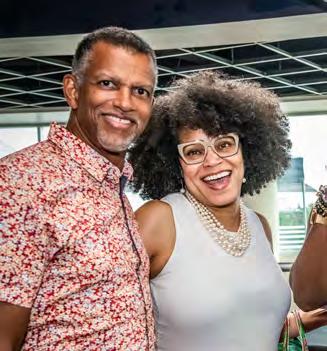

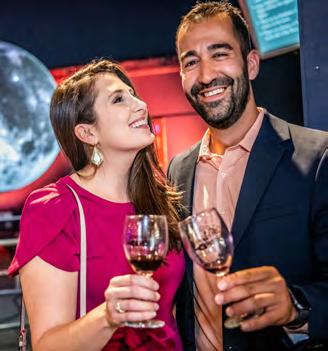
We would like to thank our many sponsors, culinary partners, volunteers, and distinguished guests for making OSC’s 12th Annual Science of Wine a huge success! With your support, we raised critical funds for the continuation and growth of our programs and exhibits that enable us to inspire science learning for life. We look forward to seeing you at next year’s Science of Wine!

Thank you to our sponsors


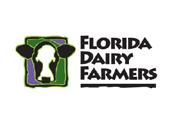



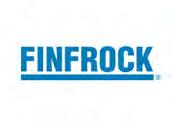

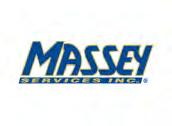
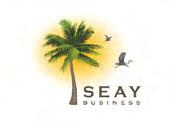


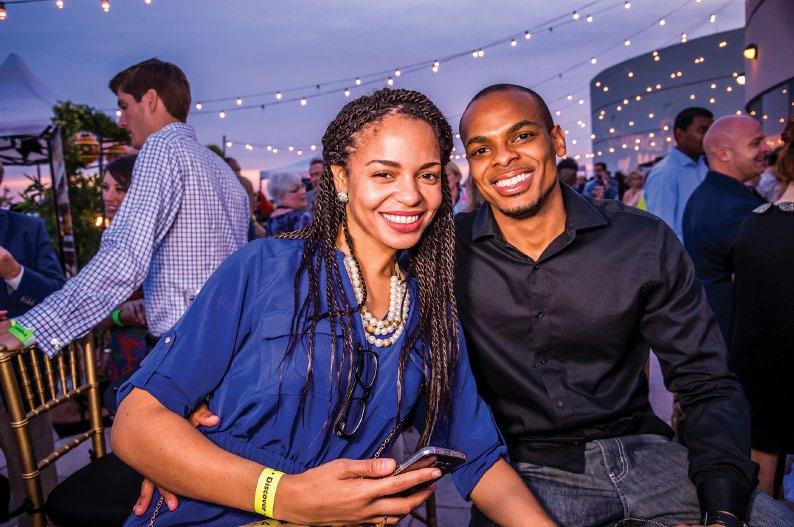
Young Professionals for OSC receive exclusive benefits such as discounted ticket pricing to special events, an individual annual Membership to OSC, and so much more!
Secure your Membership today by visiting osc.org/young-professionals.

Renew Early and Save 10% on Another Year of Membership!
Check the expiration date on your Membership card to make sure it’s active through these exciting exhibit premieres. To renew early, go to osc.org/membership
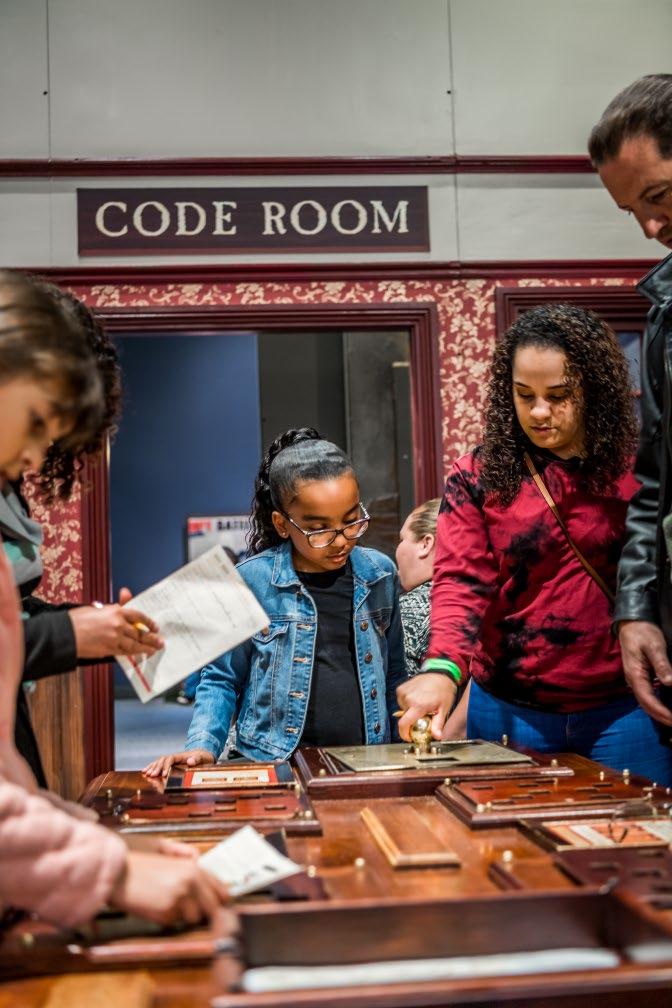
The Science of Guinness World Records, presented by Nemours Children’s Health will be here until January 2025!

J a nu a r y 26 - M ay 4 , 2025
Crack the Code. Uncover the Truth. Solve the Case. Explore the science of spying and espionage and see if you have what it takes to solve a thrilling mystery!

M ay 17 - S ep tember 7, 2025
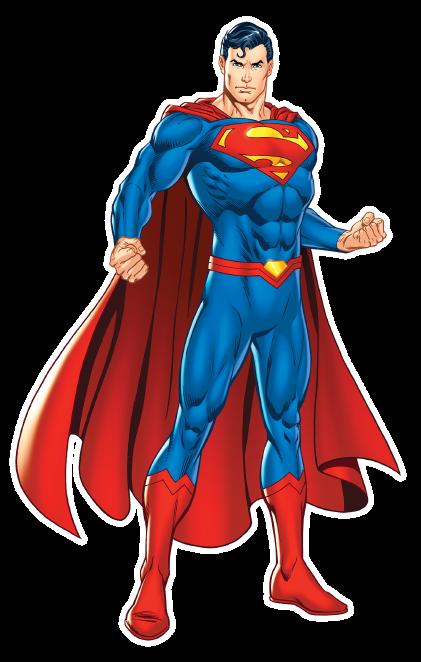
Discover Your Superpowers. Grab your capes and begin your training with the Justice League. No alter egos necessary!
